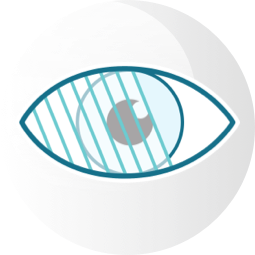Your eyes are a window to the world, allowing you to take in all the beauty it has to offer. But sometimes, things can go awry due to infection or inflammation, and you may experience vision loss, irritation, redness, or discomfort.
Eye infections are common and can be caused by various factors such as bacteria, viruses, allergies, and injuries. Your optometrist can examine your eye infection symptoms, determine the cause, and recommend a personalized treatment.
What Kind of Eye Infections Can an Optometrist Treat?
Our eyes are one of the most important organs in our body. However, they’re also vulnerable to infections from bacteria, fungi, and other microorganisms. Fortunately, optometrists can help manage and treat eye infections.
Conjunctivitis
Also known as pink eye, conjunctivitis is a common eye infection characterized by red eyes, itching, and discharge. There are different types of conjunctivitis, such as bacterial, viral, or allergic, and an optometrist can diagnose it and provide appropriate treatment.
While bacterial and viral conjunctivitis are contagious and can quickly spread through a school or workplace, allergic conjunctivitis is caused by allergens and can’t be passed between people. Knowing what kind of pink eye you or your family are dealing with goes a long way in keeping everyone safe.
Keratitis
Keratitis is an infection of the cornea, the eye’s clear front dome, caused by bacteria, viruses, or fungi. Non-infectious keratitis can be caused by eye injury or wearing contact lenses for too long.
Symptoms can include eye pain, sensitivity to light, and blurred vision. Your optometrist can confirm the diagnosis and provide treatment.
Blepharitis
Blepharitis is an inflammation of the eyelids caused by bacteria or abnormalities in the oil glands. It can cause redness, swelling, and itching around the eyelashes and is a common factor in dry eyes.
Your optometrist can help you unblock your glands and reduce inflammation, hopefully returning hydration to your eyes.
Stye
A stye is an infection of the oil glands or hair follicles at the base of the eyelids. It can cause a swollen and painful lump that’s usually tender to touch. Styes can develop on the upper or lower eyelids and usually last a few days to a couple of weeks.
Uveitis
Uveitis is a more serious eye infection affecting the uvea, the middle layer of the eye. If left untreated, it can lead to vision problems and even permanent blindness. This eye condition is not very common and can be difficult to diagnose. However, your eye doctor can detect uveitis with an eye exam and may refer you to an ophthalmologist for specialized treatment.
Symptoms of an Eye Infection
Eye infection symptoms vary depending on the type of infection, but some common signs include:
- Redness
- Itchiness
- Pain
- Irritation
- Eye discharge
- Swelling
- Sensitivity to light
- Blurred vision
- A gritty sensation
- The feeling like there’s something stuck in your eyes
If you notice any of these symptoms, contact your eye doctor immediately. Many optometry clinics offer same-day emergency appointments.
Common Treatments for Eye Infections
Your optometrist will determine your treatment plan based on your symptoms and the cause of the infection. An eye exam can help us tell if you have an eye infection, and sometimes we’ll need to take a sample of discharge for additional testing.
Viral and allergic infections normally heal on their own, and treatment generally focuses on pain relief. For bacterial infections, your optometrist may prescribe antibiotics to help fight the infection.
Eye drops are a common treatment for eye infections. They are available over the counter or with a prescription and are administered directly into the eye. Depending on the type of eye drop, they can help fight bacteria, relieve inflammation, or ease allergy symptoms.
Eye drops specially made to hydrate your eyes are called artificial tears. These lubricating drops are popular treatments for dry eye disease but can also help soothe the eye during an infection.
For relatively quick relief, a warm compress can help ease the discomfort of an eye infection, help relieve inflammation, and reduce redness and swelling. Soak a clean cloth in warm water and apply the compress to your infected eye for 10–15 minutes, several times a day.
Tips for Preventing Eye Infections
Some infections are unavoidable, but reduce your risk of eye infections with certain lifestyle habits. Here are some proactive eye care tips:
- Wash your hands with soap and warm water before touching your eyes, handling contact lenses, or applying eye makeup.
- Follow the proper cleaning guidelines when handling your contact lenses. Take time to clean your contact lenses and the case before storing them.
- Avoid rubbing your eyes, even when you have an irritation or itch. Instead, eye drops or cold compresses can provide relief.
- Avoid sharing eye makeup products like mascara, eyeliner, and eyeshadow. Regularly replace your eye makeup, especially if you previously had an eye infection.
- Wear eye protection when playing sports or while working.
- Wear sunglasses with UV protection and a wide-brimmed hat when outside.
- Avoid swimming in contaminated water.
Supporting Your Healthy Sight
An eye infection can range from being quite bothersome to downright dangerous. However, your optometrist can offer many effective treatments. From conjunctivitis and keratitis to blepharitis and styes, the team at McCauley Celin Eyecare Associates can provide appropriate treatments to help alleviate irritating symptoms and prevent complications.
If you suspect you or a family member has an eye infection, book an eye exam immediately. Remember, prevention is always better than cure, so let’s work together to reduce the risk of eye infections.













